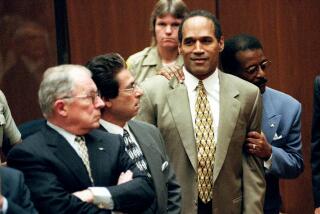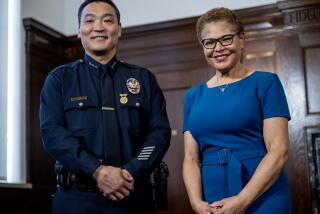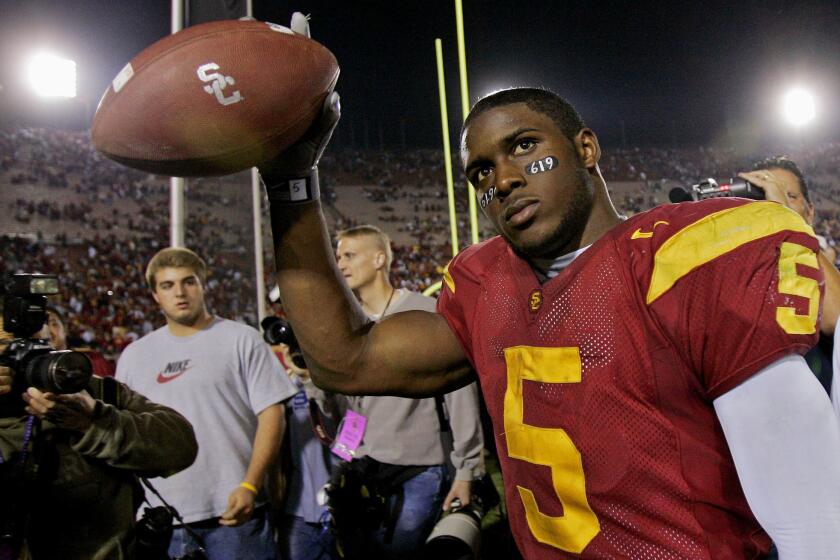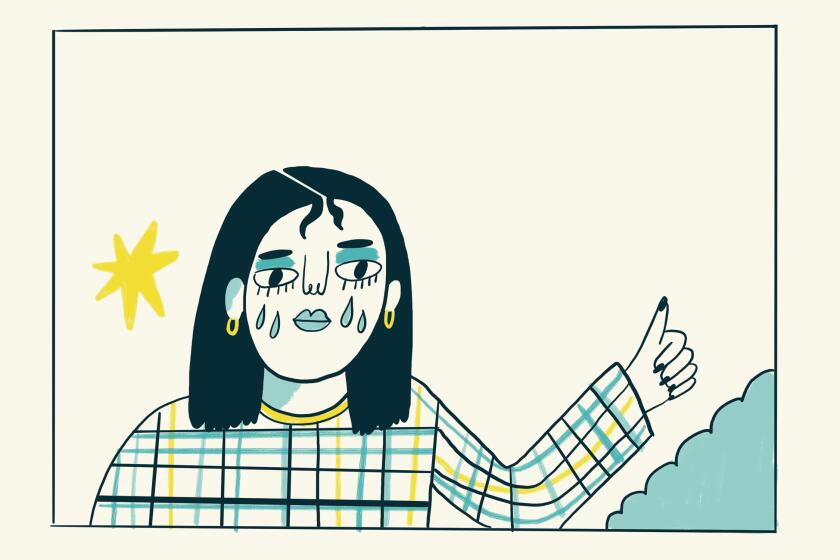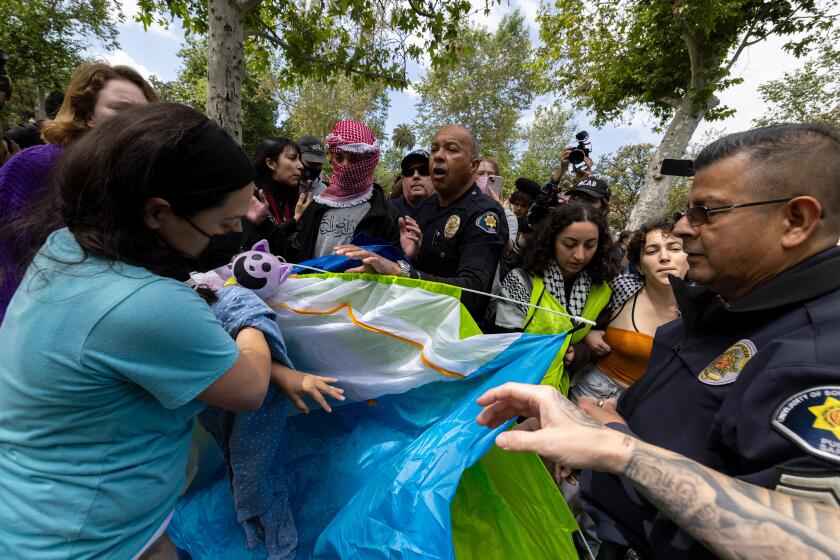Jim Newton: Change in black and white in L.A.
When Rodney King careened to a stop in Lake View Terrace 20 years ago last week, the violent end to his flight also marked the end of a chapter of Los Angeles history.
King’s beating was, as the world soon discovered, captured on videotape by George Holliday, who had recently bought a video camera. Awakened in his Lake View Terrace apartment by the commotion outside, he turned it on and aimed it at the three Los Angeles police officers — Laurence M. Powell, Timothy E. Wind and Theodore J. Briseno — who were striking and kicking King under the direction of an LAPD sergeant, Stacey C. Koon. Powell, out of shape and flailing, struck King again and again with his baton as King writhed on the ground. More than a dozen officers from the LAPD, the Highway Patrol and the Los Angeles Unified School District police force looked on; not one bothered to report anything wrong.
Holliday released his video — after the LAPD refused to take a complaint from King’s brother about the incident — and to many Los Angeles residents, it offered proof of what they had long been saying: The LAPD was riven by racism and dominated by a culture of brutality.
Some of those complaints were overblown; I knew many LAPD officers from that era, and the vast majority were uncommonly brave and decent. But there were also some reprehensible public LAPD customs back then, such as referring to domestic violence incidents in black families by the initials NHI, for “No Humans Involved.” Daryl F. Gates, the LAPD’s chief of the era, had not helped matters when he discussed the controversial issue of blacks who had died after being subjected to chokeholds. The reason, he suggested, was that they did not respond to the hold the same as “normal people.” By the time I began covering the LAPD in the early 1990s, officers referred to their police cars as “black and normals.”
When the officers involved in the King beating were subjected to scrutiny, the picture was grim. On the evening they encountered King, Powell and Wind had responded to a domestic violence call at the home of a black family. Afterward, Powell sent a message to a colleague describing that incident as “right out of Gorillas in the Mist.” Her reply: “hahaha… let me guess who be the parties.”
The beating also occurred within a fraying metropolis: Tension between Korean shopkeepers and African American patrons was widespread; tension between a growing Latino population and a shrinking black political community further strained the city’s peace. Two weeks after the King beating, a Korean store owner shot and killed a 15-year-old black girl, Latasha Harlins, in a dispute over a bottle of orange juice. The city lurched toward violence.
Los Angeles’ leaders did not do much to reassure anyone that they were handling those problems with tact or professionalism. In the aftermath of the King beating, Gates initially was sharply critical of the officers. Mayor Tom Bradley, a former LAPD officer, picked up the mantle of criticism, and Gates became defensive. The result: Bradley and Gates stopped speaking.
So, as discontent simmered, the city’s two most important leaders not only failed to plan together but actively avoided each other. The police, meanwhile, were being asked to keep the peace without adequate resources, which heightened their impulse to resort to force.
When the officers who beat King were acquitted by a Ventura County jury in 1992 — the panel hung on one count against Powell — the accumulated anger toward the LAPD erupted across Los Angeles. Downtown, rioters overturned an LAPD guard shack and set it on fire as top police officials frantically searched for Gates; he was at a party to raise money to defeat police reform. Paralyzed, the LAPD held back as looters streamed through the city. At the intersection of Florence and Normandie, a mob dragged truck driver Reginald Denny from his cab and beat him to a pulp.
That was the nadir of modern Los Angeles. The rioting left scores dead and billions of dollars in property damage. Only with the deployment of the National Guard did calm begin to return.
What emerged from the wreckage, however, was something remarkable and transformative. The Christopher Commission, convened soon after the King beating tape was released, sketched a new vision for the LAPD, one more firmly under civilian control. Mayor Richard Riordan, elected in 1993 on a promise that he was “tough enough to turn L.A. around,” poured resources into the LAPD; he also pledged support for change and placed reform-minded commissioners atop the department. Riordan’s commission wrestled with an ineffective chief, Willie L. Williams, but gradually both built up the department and infused it with a healthy respect for those it served.
Eventually, chiefs Bernard C. Parks, William J. Bratton and Charlie Beck completed that evolution under the guidance of mayors James Hahn and Antonio Villaraigosa. Where mayor and chief once shunned each other, Villaraigosa and Beck now are closely allied. L.A.’s public safety achievements are the mayor’s most conspicuous accomplishment. Today’s LAPD is well regarded in communities where it once was feared. Crime has declined to generational lows, and has stayed down even as it has ticked back up in some big cities.
As City Hall confronts a staggering budget shortfall and puzzles over how to get control of pensions and healthcare costs that threaten to swamp its finances, the experience with policing and race are worth remembering. They prove that one generation’s defects need not poison the next. They demonstrate that even disgrace can lead to progress.
More to Read
A cure for the common opinion
Get thought-provoking perspectives with our weekly newsletter.
You may occasionally receive promotional content from the Los Angeles Times.
